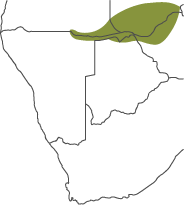Cuatir Nature Reserve
Lodge
My love affair with the Cuatir started with a late afternoon flight over the area in December 2012. I was bumbling along over the vast Angolan landscape, flying a Cessna Caravan. My mission was to map the territory for a tourism master-plan being compiled on behalf of the Angolan government. I sa Read more +
My love affair with the Cuatir started with a late afternoon flight over the area in December 2012. I was bumbling along over the vast Angolan landscape, flying a Cessna Caravan. My mission was to map the territory for a tourism master-plan being compiled on behalf of the Angolan government. I saw an enclave in the river below and immediately looked for any sign of human habitation in the area, this I learned is an excellent indicator of the wildlife that you will find in an area. There were no towns, no nada I could not believe my eyes. During 21 years of being a conservationist, pilot and charter operator, I have seen many areas, where pristine African Wilderness was sliced up into a mosaic of patches for agricultural use. Since I could see no trace of human activity in the area I knew this was a place worth visiting.
Due to other business obligations, it took us four years to first scout the area on land, get all the paperwork in place and start with the development of a research camp and a tented bush camp for guests.
The Cuatir Conservation Project was born. Today Cuatir is a developed conservation area consisting of some 40,000 hectares. We have a base camp with six premium chalets, catering for fly-in safaris as well as a bush camp catering for self-drive visitors who wants to experience the solitude and wildlife of this natural wonder.
HideContact
Call Us

for last minute bookings & info
Email us
for the best rates
Website
Cuatir Nature Reserve's official website
Booking
Booking Enquiry
for firm date requests
Trade Enquiry
for STO Rates
SADC Resident Rates
SADC passport holders
Also view:

Cuatir Nature Reserve
is in the Wetlands Paradise region.













